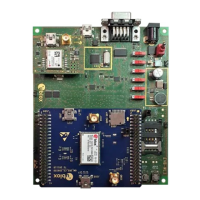SARA-R5 series - System integration manual
UBX-19041356 - R04 Design-in Page 60 of 118
C1-Public
o Further to the custom PCB and product restrictions, antennas may require tuning to obtain
the required performance for compliance with all the applicable required certification schemes.
It is recommended to consult the antenna manufacturer for the design-in guidelines for
antenna matching relative to the custom application.
In both of cases, selecting external or internal antennas, these recommendations should be observed:
• Select an antenna providing optimal return loss / VSWR / efficiency figure over all the operating
cellular frequencies.
• Select an antenna providing the worst possible return loss / VSWR / efficiency figure in the GNSS
frequency band, to optimize the RF coexistence between the cellular and the GNSS systems (see
section 2.4.4 for further details and guidelines regarding Cellular / GNSS RF coexistence).
• Select an antenna providing appropriate gain figure (i.e. combined directivity and efficiency figure)
so that the RF radiation intensity do not exceed the regulatory limits specified in some countries:
refer to the FCC United States notice reported in section 4.2.2, the ISED Canada notice reported
in section 4.3.1, the RED Europe notice reported in section 4.4.
2.4.2.2 Examples of cellular antennas
Table 18 lists some examples of possible internal on-board surface-mount cellular antennas.

